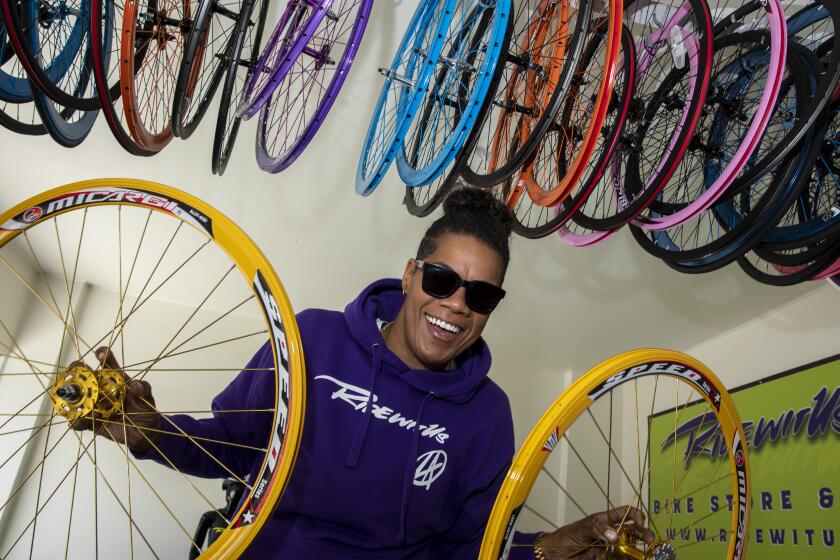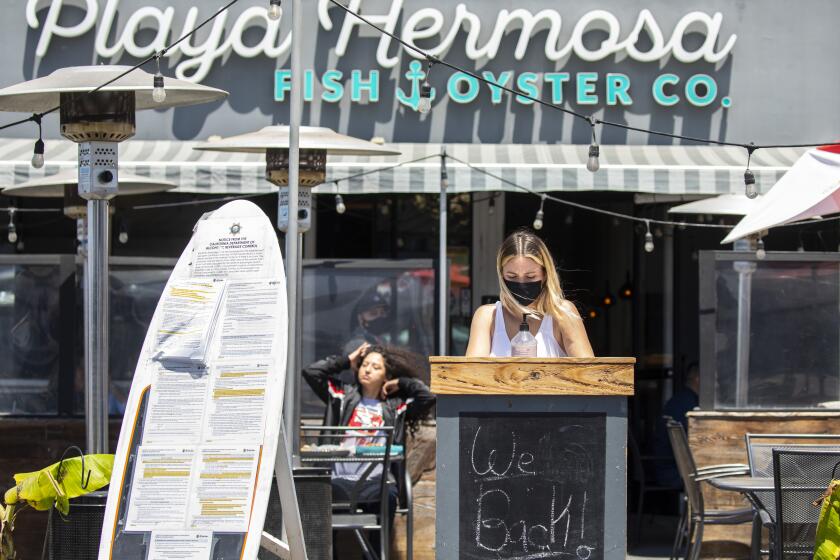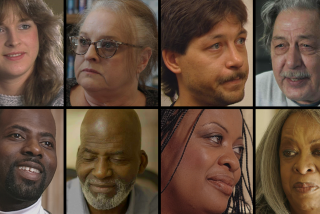A pandemic love story you haven’t heard before: Parents and their adult children
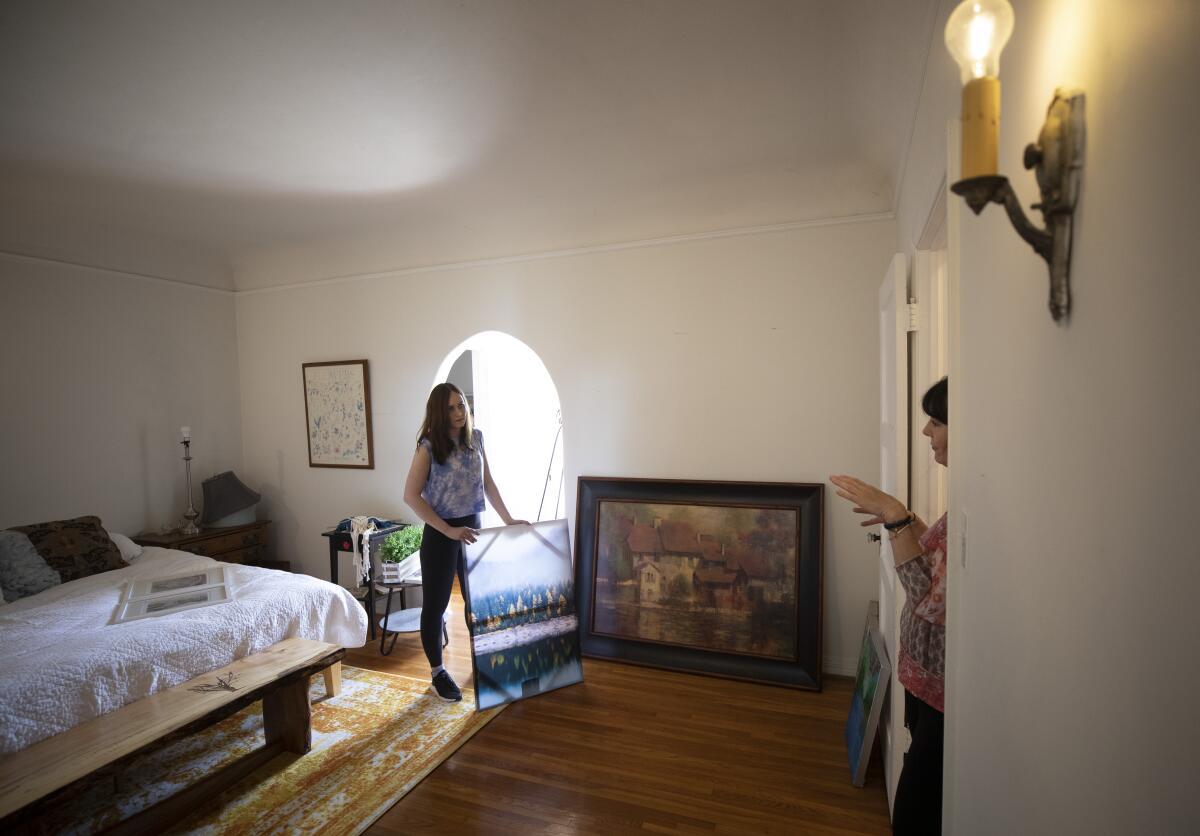
Nearly every evening after dinner, Mary and Melissa Anderson walked together along the rural road stretching out from their home.
The one-mile journey amid groves of walnut trees became a safe space for mother and daughter. The walk was always the same, to the nearest stop sign and back, but the conversations ranged wide and deep.
“I don’t know anybody like I know Melissa,” said Mary, 58. “You raise your kids to grow up, and somebody else gets to meet them like this, as adults. But now I get to know her like this.”
The pandemic pushed millions of young adults to live with their parents as college campuses shuttered, businesses reduced their hours and social isolation wore down people’s mental health. In July, 52% of Americans 18 to 29 years old lived with a parent, making it the most common living arrangement for people in that age group and the highest level recorded in at least a century, according to the Pew Research Center.
The experience wasn’t always easy, as families forced together also grappled with financial struggles, domestic strife and the threat of contracting an illness that has killed nearly 600,000 Americans.
But for some lucky families, the unexpected time together often felt like a gift, a bonus year to bond with parents and siblings. And for the luckiest, like the Andersons, that time was a revelation.
Melissa, 29, is the third of four daughters. She hadn’t spent much time alone with her parents until she packed up her Los Angeles apartment last summer and moved in with them in Gridley, about an hour north of Sacramento.
But over several months, the three Andersons formed a bond that more resembles a friendship among peers than a parent-child relationship.
Melissa spoke up when things bothered her, which she hadn’t always done in the past. Mary and her husband, David, learned they didn’t have to shield Melissa from problems, nor feel responsible for hers. During a stressful year, they took care of one another.
“Normally you look to your parents as reassurance that everything is going to be OK, but we were all on the equal playing field of being scared and being in the unknown, and I think that allowed us to know each other better,” Melissa said. “I think they know me probably better than anyone else now.”
Melissa became so comfortable living with her parents that a few months ago, as her friends began to get vaccinated and resume a somewhat normal life in L.A., she asked Mary and David to make sure she moved out by the summer, fearing she wouldn’t leave otherwise.
“We heard her. She told us that at dinner one night,” Mary said. “So we’ve been just faking how excited we are about her moving back to L.A.”
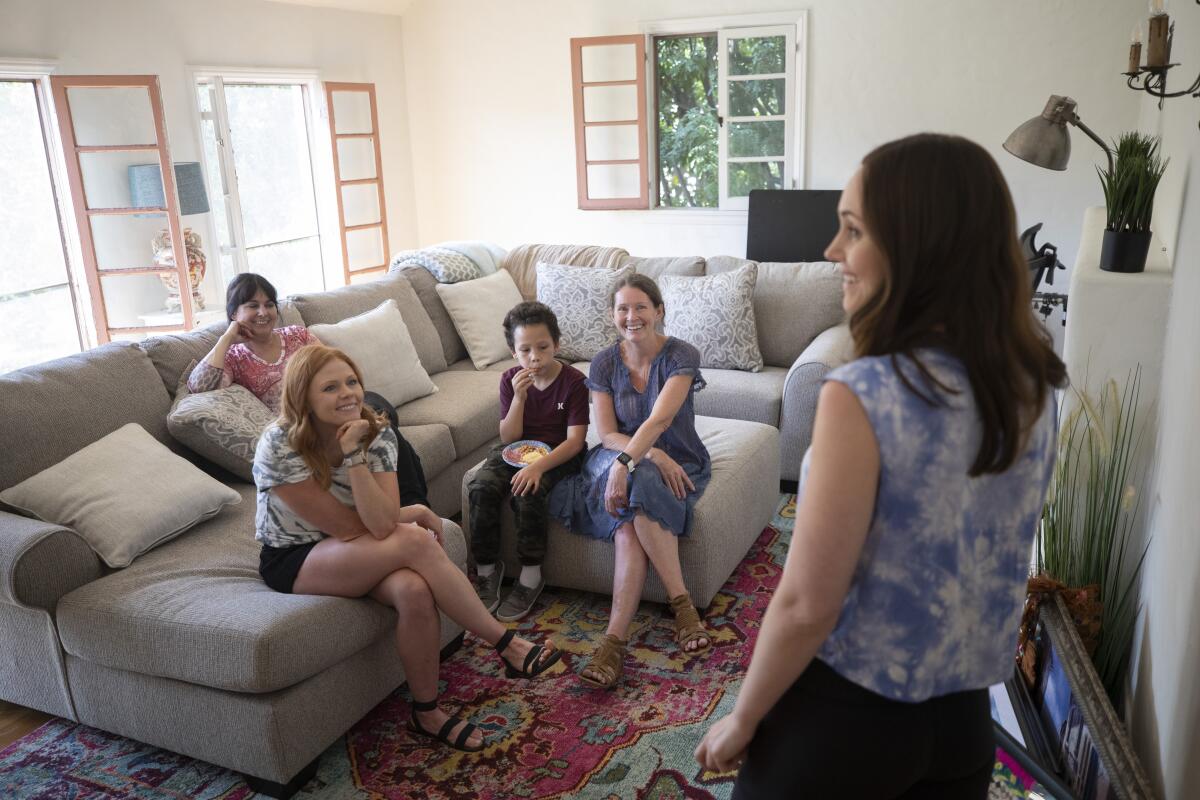
Unlike so many stories about the pandemic, the recent movement of adult children home is often a joyful one. Americans traded their independent lifestyles for shared movie nights, exercise buddies and dinners around the table. Many, for the first time, tried a kind of intergenerational living far more common in other countries — and liked it.
::
For decades, the percentage of young adults in the U.S. living with parents has been steadily growing, after hitting a low in the 1960s. The practice became especially widespread during the Great Recession, but continued to climb even after the economy bounced back.
Jeffrey Arnett, a Clark University psychology professor who studies young adults, said the shift is due to young adults more frequently delaying marriage till their 30s and spending more years in school.
The increasingly shaky financial and social situations for people in their 20s have made living at home more appealing, he said — something the pandemic kicked into overdrive.
“It’s been tough for all of us, and tougher for them. ... They’re the ones most likely to have their jobs disrupted, their educational paths disrupted, their social lives disrupted,” said Arnett, who coined the term “emerging adulthood.” “The recent COVID experience is just an exaggeration of what’s been occurring for a long time.”
Of course, not everyone wants to move in with their parents, and being able to do so is a privilege. But it’s one many have fallen back on recently; the number of people between the ages of 18 and 29 living with a parent increased by 2.6 million between February and July of last year, according to Pew.
Derek Daniels’ three-week trip to his parents’ house last summer turned into a 10-month stay. Not only was his childhood home in Burlingame less lonely than his empty L.A. apartment, but he savored the extra time with his younger sister, who was home from college.
“When would you be able to go back at 24 and live with your entire family for almost a year?” said Daniels, who returned to North Hollywood in April. “As the world outside was crumbling, it was nice to be together.”
Josephine Cheng, 24, was more reluctant to leave San Francisco for her hometown of Chino Hills. But the money she has saved living with her family has made even sharing a bathroom with her teenage sister tolerable.
“I went from telling my mom constantly: ‘I can’t wait to move out. I’m daydreaming about apartments,’ and now fast forward a year later, my mom is asking me, ‘Have you heard when the office is going to reopen?’” said Cheng.
She was a good roommate.
— David Anderson speaking about his 29-year-old daughter, Melissa, who moved home during the pandemic
For Melissa Anderson, Gridley had never been a place she wanted to end up. But last summer, as her lease on her one-bedroom apartment in the Pico-Robertson neighborhood was ending, she faced the prospect of spending the rest of the year alone. So for the first time since high school, she moved home.
It was a difficult adjustment. Her mom’s hugs made her cringe because she hadn’t touched anyone in so long. She sometimes felt like she was regressing into the child who once lived there.
But she and her parents renegotiated their boundaries. She and her dad, a high school teacher, figured out how to both work remotely from the same house.
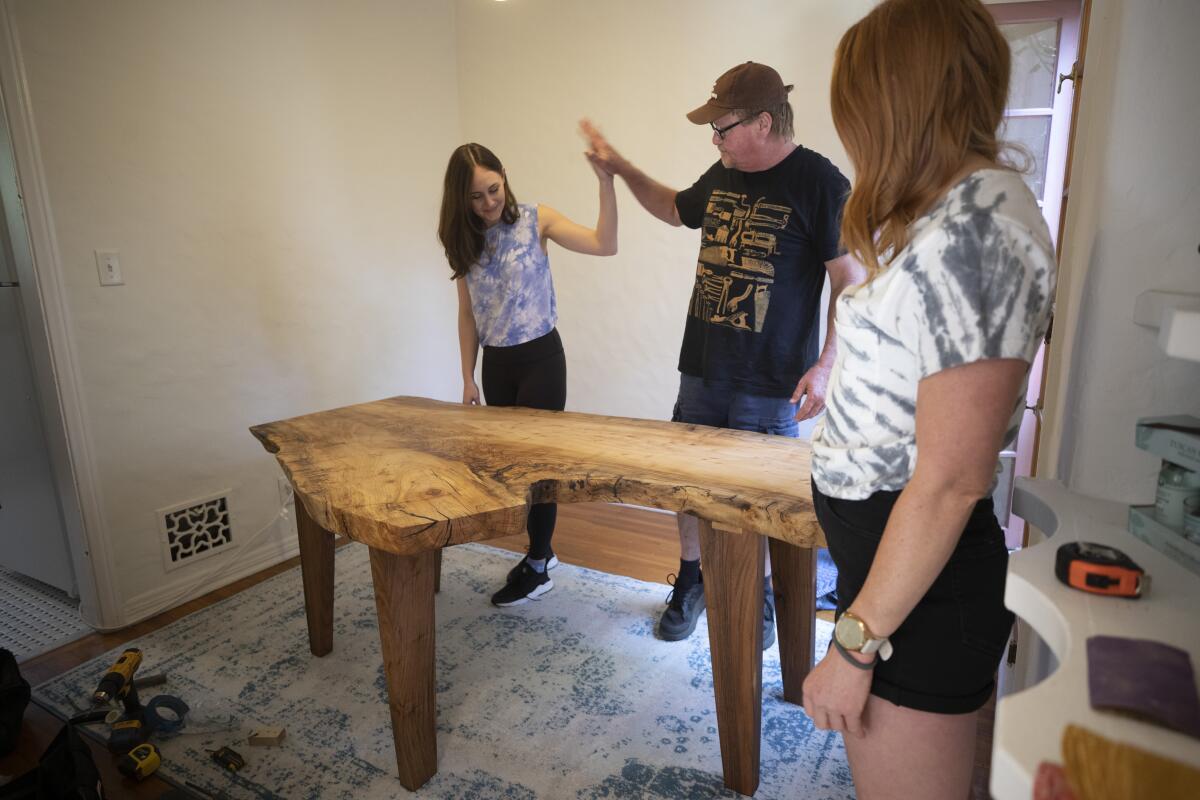
“When they’re kids, you’re still more the parent. Now it’s less of a parent role — actually, hardly any of a parent role — and it became more developing a friendship,” said David, 60. “She was a good roommate.”
Melissa and Mary began a daily ritual of wandering down their street around dusk. While the world swirled with uncertainty, they took the same path every day, to the stop sign and back, never deviating.
The time allowed them to get to know each other in a new way. Mary had once thought that Melissa was a private person, but the wall that had separated them fell.
No topic of conversation was off the table. Dating. Religion. Money. Family relationships. Life goals.
Mary said that she had previously thought that Melissa, her only daughter who is single, was missing a necessary piece of her life.
But she realized Melissa can be happy partnered or not, and that her child has become a confident woman who doesn’t put too much stock in other’s opinions.
“That, to me, has been fascinating because I love that in a person. I didn’t know she had that. I didn’t give her enough credit,” Mary said. “I would like to be her friend if she wasn’t my daughter.”
Arnett, the researcher, said parents now seek different relationships with their children than they had with their own parents.
“The ideal of parenting has really changed from figure of authority to best pal,” he said.
He added that the widespread availability of birth control has made having children more of a choice.
“If you think about why we have kids: It’s for the emotional rewards of it,” said Arnett. “We have kids and we want to be close to them.”
Parenting “is unlike anything else in my experience. When it’s good, it’s just tremendous. There’s hardly anything better.”
He added that people also tend to have fewer children now, which allows for greater intimacy between parents and their kids. A conversation among three people — say two parents and a child — is inherently different than a conversation involving six or seven, Arnett said.
Kellie Hart started a bike club to relieve stress over the COVID-19 pandemic. A year later, her club has grown into shop — and a movement.
Arnett’s own college-aged daughter has been living with him and his wife for the past year, which has provided an opportunity for more one-on-one conversations and sharing of interests, he said.
And the stereotypes of young adults mooching off their parents are inaccurate, he added. Most pitch in for groceries and help around the house, especially over the last year.
Adriana Barba, 29, began paying more household bills when her mom lost her job because of the pandemic. As news of the virus spread, she recommended to her family that they stop wearing shoes inside their Boyle Heights house.
And when her mom fell sick with the coronavirus in July, Barba made a plan to prevent the rest of her family from catching the virus as well, by wearing masks inside and keeping to separate rooms. Ultimately, no one else tested positive.
A California workplace safety board recommends ending mask rules for workers if everyone in a room is vaccinated against COVID-19.
“I honestly feel like I was their mom,” Barba said. She wants to live on her own, she said, but “my plan is to move somewhere nearby so I can keep checking on them.”
Melissa, after vowing she would leave Gridley by the summer, put down a deposit on a new apartment in L.A. in May.
She and her parents agreed that she needed to resume her own life, even as they dreaded saying goodbye.
She decided, however, that if she has children one day, she would like to move nearer to her parents, something she had never considered. And for now, her apartment in L.A. will showcase more photographs of her family than it did before.
“I would never say the pandemic has been a blessing. I don’t believe that. I think it’s been horrible and caused a lot of pain and trauma for a lot of people,” Melissa said. “But it has put things in perspective, and taught me anyway, the kind of life I want to be living after this.”
On a recent weekend, Mary and David helped her load her belongings into their cars and a U-Haul truck. David finished assembling a dining table he built for her in his wood shop.
And in the early morning, before the sun rose, parents and daughter pulled onto the road that leads away from their home, the same one Melissa walked every day that she lived there.
This time, she didn’t turn back at the stop sign.
More to Read
Sign up for Essential California
The most important California stories and recommendations in your inbox every morning.
You may occasionally receive promotional content from the Los Angeles Times.
